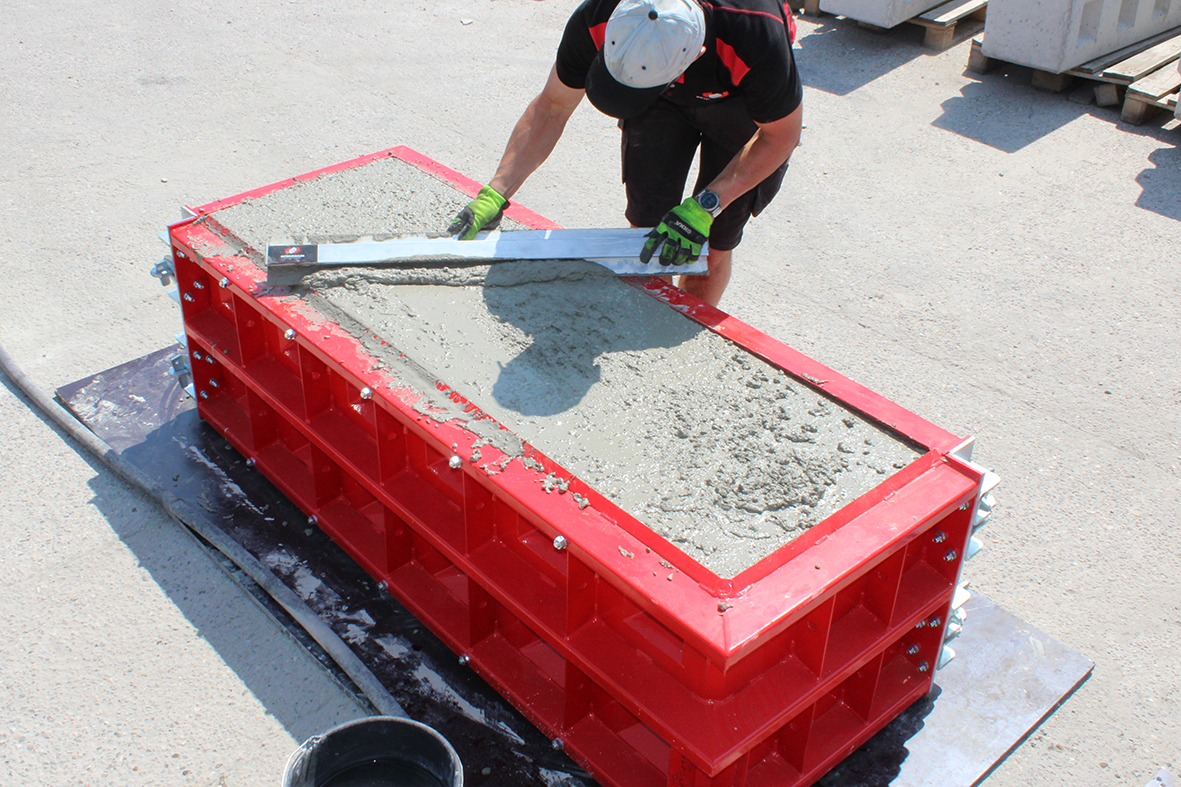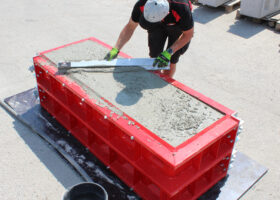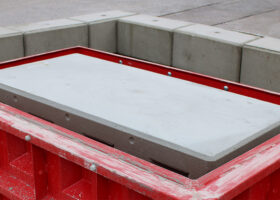How to achieve a level surface for your precast concrete products
How to achieve a level surface for your precast concrete products
Ensuring a perfectly even surface is critical when producing high-quality precast concrete products such as interlocking blocks and large paving slabs. Achieving this requires proper technique and the right tools. This guide will walk you through the process of straightening freshly poured concrete using a professional straightedge finishing tool, designed for floating, screeding, and striking off freshly poured concrete surfaces.
Step-by-step guide:
- Prepare the mould and pour the concrete:
Ensure the mould is clean, level, and properly set up. Spray sufficient release agent oil to the mould surfaces that will contact the concrete. Pour the freshly mixed concrete evenly into the mould, slightly overfilling to allow room for compaction and levelling. - Compact the surface:
Lightly tap the sides of the mould or better use a concrete vibrator to remove air pockets and help the concrete settle. This reduces voids and ensures better density. - Rough levelling:
Use a trowel to roughly spread and level the concrete. Make sure it covers all corners and edges uniformly, with the center a bit higher to help with any settling as the concrete dries. - Screeding with the straightedge tool:
Place the straightedge finishing tool on the mould edges. Holding it firmly with both hands, drag it across the surface using a sawing motion (back and forth) while pulling it towards you. Apply even pressure to remove excess concrete and fill low spots.
Pro Tip: Keep the straightedge slightly tilted towards you to maintain better control and reduce strain. - Floating the surface:
After screeding, allow the concrete to set slightly until water sheen disappears. Use a float or straightedge to smooth the surface, working in circular motions to close pores and further level the concrete. - Final touches:
Inspect the surface for any irregularities. For minor adjustments, use the straightedge tool again or a trowel for detailed work. Ensure edges are crisp and corners are well-defined. - Curing:
Proper curing is essential to ensure proper strength and durability. Cover the concrete with a curing blanket or plastic sheet to retain moisture. Keep it damp as recommended for your concrete mix.
By following these steps, you can achieve a perfectly smooth, even surface for your precast concrete products, ensuring both aesthetic appeal and structural integrity.
How to choose the best straightedge?
You can select the straightedge that best fits your needs by considering the specific requirements of your projects and the advantages of each material:
- Aluminium straightedges are lightweight, durable, and resistant to corrosion. They are easy to handle and maintain, making them ideal for various applications.
- Steel straightedges are highly rigid and resistant to bending. Since they are providing exceptional accuracy. Being heavier than aluminium, they may be not as easy to handle and can be prone to rust if not properly maintained.
- Wooden straightedges are affordable and easy to work with. However, they can be prone to warping and may not provide the desired precision.
- Acrylic straightedges are transparent, allowing for clear visibility of the work surface. They are lightweight and resistant to corrosion. On the other hand, being less rigid than metal options, they may not withstand heavy-duty use.
If you need further assistance or have questions about selecting the right straightedge for your project, feel free to contact us at +31 85 800 1633 or info@betonmoulds.com.





